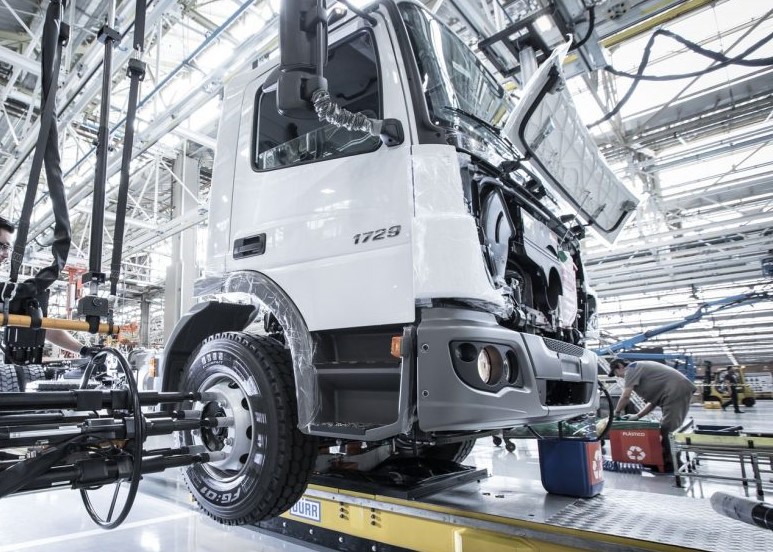Activities at the plants begin with adjusts to meet Proconve P8 vehicles demand


By Décio Costa | 2/7/23 | Translated by Jorge Meditsch
The year started with a new reality for the heavy vehicle segment, with the beginning of the Proconve P8 rules on January 1. The new phase imposed a transition pace at the plants, which used most of the last month of 2022 to fulfill orders and, if possible, provide some units to stock.
Under this activities program exception, truck production in January fell 72.3% compared to December, from 14.6 thousand units to slightly more than four thousand. Compared to the same month last year, when 9.4 thousand trucks were produced, the fall reached 57.3%.
Bus production showed the same behavior. In January, the 782 chassis manufactured represented a 57.9% retraction compared to December (1.8 thousand units) and 41% less than one year ago, when 1.3 thousand chassis were assembled.
“Due to the legislation change, smaller numbers were already expected with a higher impact in the first month of the year, as did happen previously in a similar situation”, explained Gustavo Bonini, Anfavea’s vice president at the sector’s monthly balance presentation on Tuesday, 2/7.
The association leader recalled that to improve production in December, the industry postponed the usual end-of-the-year collective vacations to January, which resulted in lower volumes. “Nonetheless, we can say the year begins under better conditions regarding inputs supply”, he said.
Bonini also recalled that January established an expressive milestone for the Brazilian heavy vehicle industry, with five million trucks produced in the country since the beginning of Anfavea’s registers in 1957.
A partir de kits CKD, serão fabricados três modelos: X-Cape 650cc, Seiemezzo 650cc e Calibro…
Gáston Diaz Perez, CEO e presidente na América Latina, revela faturamento de R$ 10,8 bilhões…
Executivo será responsável pela Divisão Mercado Industrial
A primeira rodada de avaliação contará com 27 modelos, um de cada montadora. Entre eles,…
"Trabalhamos em diversas frentes para tornar a empresa cada vez mais forte e resiliente”, diz…
Ritmo das atividades acompanha momento positivo do mercado, que cresceu 77% no período